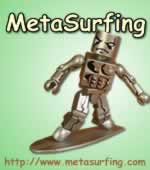
It may sound like a crazy stunt dreamed up by an adrenalin junkie, but the plan, dubbed the "Subhuman project", has attracted serious attention from marine biologists. That's because the sub, when it takes to the seas later this year, could for the first time allow them to explore the upper layers of the ocean silently and unobtrusively, revealing marine life as it has never been seen before.
Ciamillo, a machinist by training and an inventor by trade, does have a track record in underwater exploration. In 1997 he made his name designing a James Bond-style underwater propulsion vehicle called the Hydrospeeder, which looks something like an underwater motorbike. Although the company that sold the Hydrospeeder later folded, Ciamillo remained keen to speed up underwater exploration. "I found myself frustrated by how slowly you move under water, especially with a bunch of dive gear on your back," he says. "It's like dropping someone in the middle of the forest in a wheelchair."
So, in collaboration with marine biologist Frank Fish of West Chester University in Pennsylvania, who specialises in the biomechanics of cetacean swimming, Ciamillo designed a carbon-fibre "tail" for divers, called the Lunocet. Modelled on Fish's CAT scans of dolphin flukes, the Lunocet has a hydrofoil profile, like an underwater wing. "As dolphins move their tails up and down, they create a forward-directed lift," says Fish. This lift becomes thrust, and lots of it: dolphins have been clocked at 54 kilometres per hour. They can turn 80 per cent of their energy into thrust, compared with a paltry 3 per cent or so for unaided human swimmers and about 10 per cent for people wearing ordinary swim fins.
The Lunocet operates in a similar way, to enable the diver to swim as efficiently as possible. A dolphin-tail configuartion has previously been shown to be up to 15 per cent more efficient at transforming energy into forward motion than even the best rigid propellers.
More from New Scientist

No comments:
Post a Comment